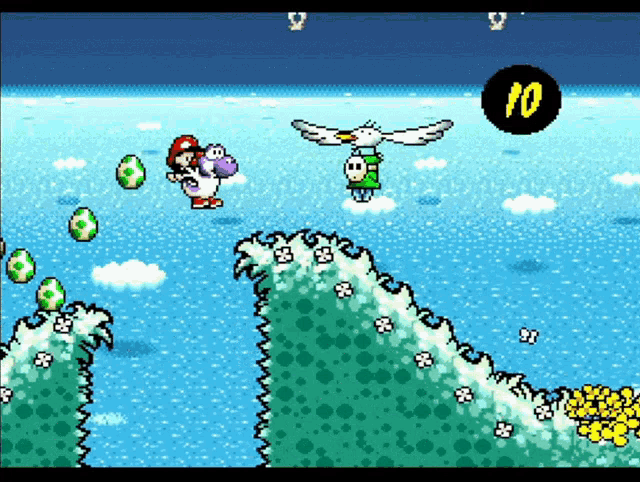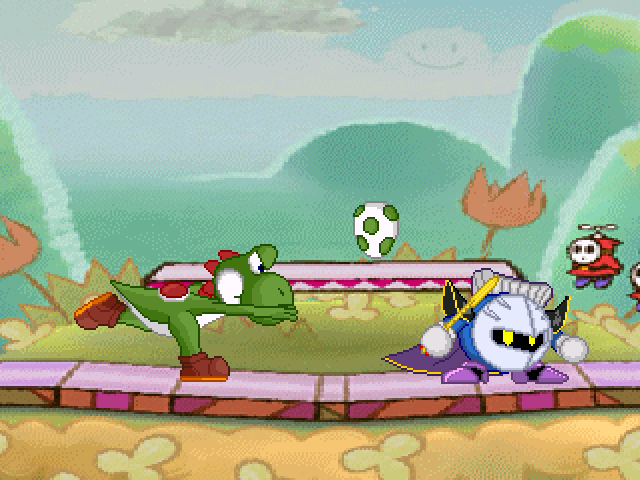
There are DK Barrels that the player can use to get back to two Kongs when they're down to one Kong. If you're down to one Kong, that kicks you out of the level entirely and it's time to restart from the beginning, or maybe from the halfway mark if you reached the Star Barrel before you died. To place this in concrete terms, let's look at the Donkey Kong Country games, which came out in a similar timeframe and are both platformers where beating the game and 100%-ing the game are different things. Games in which there are health pickups or other ways to 'undo' mistakes to some extent or another can extend the number of mistakes allowable within a level theoretically infinitely, but it will remain the case that the number of cases where the designers expect mistakes have to be kept within the bounds of the innate resistance+such power-ups. Most games immediately and severely punish mistakes, which means they have to carefully construct themselves so that a 'typical' player will only rarely actually experience mistakes. So long as it isn't lava, spikes, or bottomless pits -all of which instantly kill Yoshi- any hazard is one a player can run headlong into, experience consequences, but still keep playing the level. This means the game can be pretty generous with danger. (I suspect, by contrast, that part of why people view its difficulty as surprising is precisely because of the extremely forgiving health mechanic) Yoshi's Island allows you to take as long as you like and get hit as many times as you like -so long as you never let Baby Mario stay separated from Yoshi for too long of a stretch. I am of the suspicion that this is because it has an extremely forgiving 'health' mechanic. There is a Super Happy Heart that is growing on the tree, but the design of the heart has more resemblance to the heart that is shown when completing a level in the game.Yoshi's Island is considered by a lot of people to be 'surprisingly hard'. The Super Happy Tree, as well as the sun, look very similar to the one that is in the background of this stage. In the same room is the Super Happy Tree. Towards the ending of Yoshi's Story, Yoshi confronts Baby Bowser. The main bottom platform of this stage resembles a book, which could be a reference to that.

The opening of Yoshi's Story states that Yoshi's Island has been turned into a story book and that the Super Happy Tree is gone because of Baby Bowser. The hint boxes can be seen in the background of this stage. In Yoshi's Story, there are boxes that give out hints when hit. In this stage there are cloud platforms on each side of this stage, but they look different from the cloud platforms in Yoshi's Story. When the time runs out or a player stands on them for too long, the clouds disappear. Some clouds have to be activated by a switch that runs on a timer. In this game there are clouds that can be used as platforms. Hence the name from SSF2, the stage is based on the settings from the game Yoshi's Story. The Yoshi's Island storybook with the Super Happy Tree as it appears in the opening cutscene of Yoshi's Story. You can help the McLeodGaming Wiki by tidying it up and give it a better presentation. It has an informal appearance and does not meet the current standards for proper articles. Thus the community has decided to ban this stage. While this would not alone ban the stage, the stage is similar to Yoshi's Story, which is slightly bigger.

The stage itself is small and has close blast zones. While Yoshi's Island (64) does not have any apparent issues that would the make the stage illegal, the stage is currently banned.

The clouds will disappear after standing on them for about four seconds, but will reappear seven seconds later. On the left side of the stage, there is one cloud, while on the right side, there are two clouds (one near the stage while the other on the other side). The bottom two are sloping inward a little bit while the top one is flat. There are three platforms that hover above it. The stage has a paper and cardboard sort of look, as such, the main platform is on what resembles a book that is on a 180 degree-shape. As a sprited version from the stage in Super Smash Bros., it is an accurate rendition of said stage in terms of design, proportion and gimmicks.


 0 kommentar(er)
0 kommentar(er)
